The 'Gokhran Collection' of OptoClones™ from the Moscow Kremlin Diamond Fund (pt.#1)
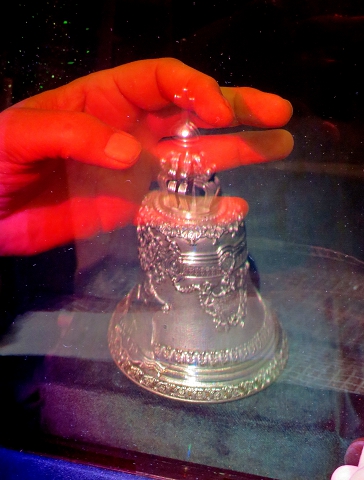
In November 2017, for the celebration of the 50th Anniversary since the opening of the Diamond Fund, the Russian government (Min. of Finance) decided to impress the public with the modern use of another advanced technological Russian invention, that of Reflection Display Holography. 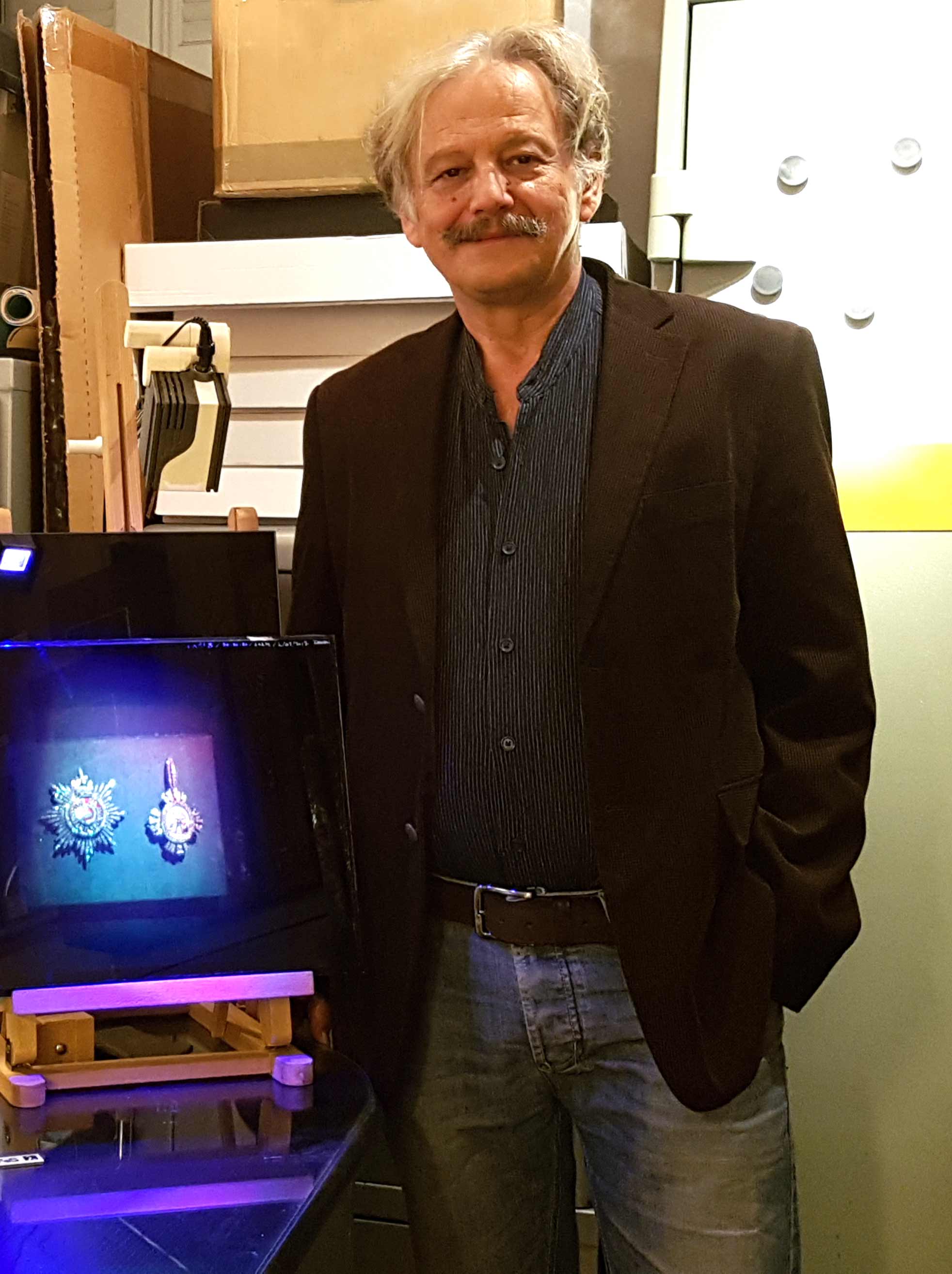 A.Sarakinos, head of holography
A.Sarakinos, head of holography
Τhe Hellenic Institute of Holography (HiH), as part of its collaboration agreement with ITMO University of St. Petersburg, responded to the open public tender call and recorded 11 invaluable historical artworks into holographic OptoClones™. It is worth noting that, apart from the unquestionnably successful results, it may have been the first time ever when an open public tender is called for the in-situ creation of holographic optical clones to be delivered as finished products in a display setup along with the necessary associated illuminants, an interesting precedent in its own merit.
It was not the first time, however, for Andreas Sarakinos, scientific director of HiH, to add new laurels in his already rich 'holographic' references by creating a series...
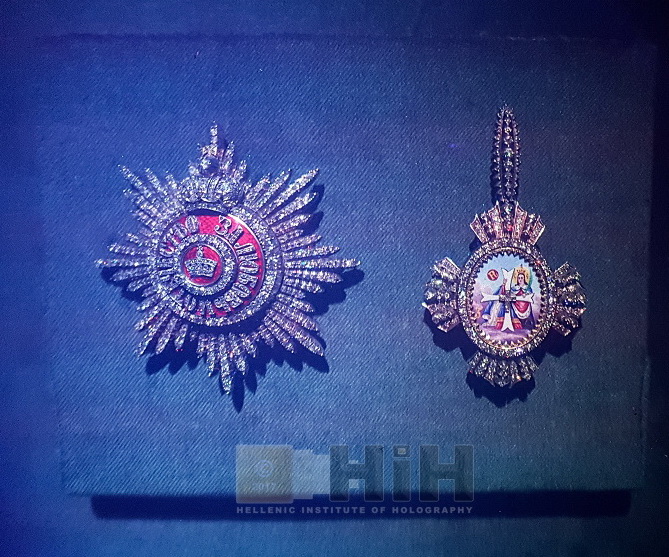 OptoClone of St.Catherine's Order (Gokhran)... of unique OptoClones™ of art objects with demanding technical difficulties in their holographic recording. But for those who have the opportunity to eye-witness from close even one of these holographic clones of latest generation, these are deemed maybe the best in display holography to this date. To the degree that the chronically sceptical and usually economical in compliments 'patriarch' of (commercial) holography David Tidmarsh unhesitantly commented 'congratulations on that fantastic hologram. It had me fooled and no hologram has ever done that before and, as you know, I have seen a lot ! ".
OptoClone of St.Catherine's Order (Gokhran)... of unique OptoClones™ of art objects with demanding technical difficulties in their holographic recording. But for those who have the opportunity to eye-witness from close even one of these holographic clones of latest generation, these are deemed maybe the best in display holography to this date. To the degree that the chronically sceptical and usually economical in compliments 'patriarch' of (commercial) holography David Tidmarsh unhesitantly commented 'congratulations on that fantastic hologram. It had me fooled and no hologram has ever done that before and, as you know, I have seen a lot ! ".
On account of the unique and invaluable nature of these artifacts, the project of their holographic documentation assumed the transport and installation of the proprietary equipment developed by HiH inside controlled access areas and the in-situ completion of all recording works. For almost one month during summer 2017, under strict monitoring conditions inside the heavily guarded high-security building of the State Treasury of the Russian Federation in Moscow, the holography team of HiH (A. Sarakinos, K.Sarakinos, A. Lembessis, M. Shevtsov) with the daily support of ITMO University generated the new Gokhran Collection of OptoClones™ which is already attracting public attention and international prizes.
 K.Sarakinos & A.Sarakinos K.Sarakinos & A.Sarakinos |
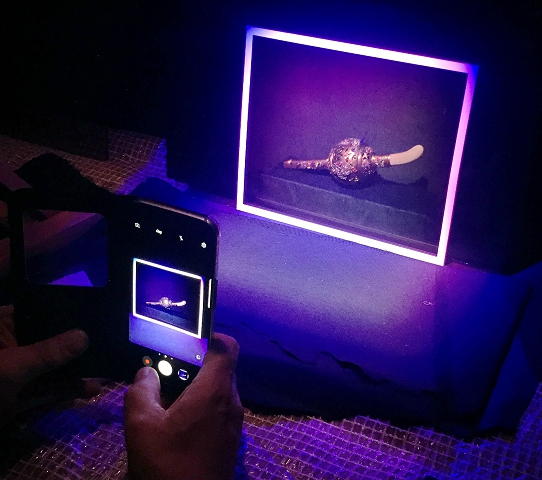 Rattle-Cum-Whistle (1740,Gokhran) Rattle-Cum-Whistle (1740,Gokhran) |
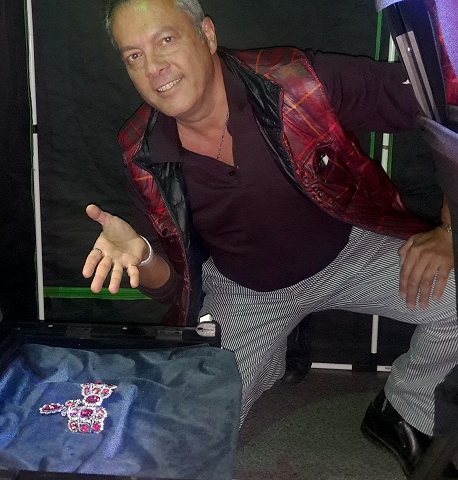 Alk. Lembessis Alk. Lembessis |
These OptoClones™ mostly in dimensions of 30x40 cm were recorded on special panchromatic photo-sensitive holographic glass plates of high resolution made by Colour Holographic (UK) and exclusively supplied to HiH under limited license for non-commercial use. They were finish-sealed under the supervision of A. Sarakinos in a second phase during September 2017 at the lab area of ITMO University in St. Petersburg. It was there where their framing and fitting of the proprietary HiH illuminants HoLoFoS-(λ) took place in preparation for their world premiere public presentation in a special event at the St. Andrews' Hall of the Central Palace in Moscow Kremlin on November 16, 2017 with official guest the Premier Minister of the Russian Federation Dmitry Medvedev. (View here a short video from Russian TV channel MIR24 posted in YouTube with auto captions/translations).
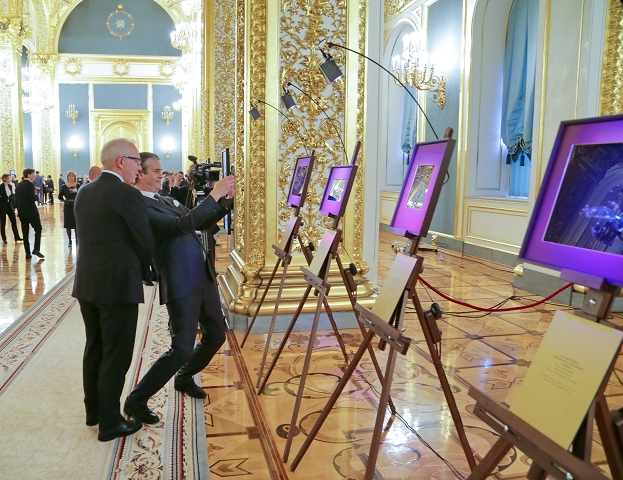 Moscow Kremlin Central Palace (16 Nov 2017)
Moscow Kremlin Central Palace (16 Nov 2017)
On the same date, this project which sets new frontiers in display holography, was presented (and awarded) at the annual international meeting The Holography Conference 2017, which took place in Barcelona, Spain. By selecting the link below, you may view HiH presentation in detail where the various stages and road-map are outlined together with exclusive photos from the project.
The international holographic community will have the opportunity to delve in technical matters at the forthcoming triennial Int'l Symposium of Display Holography (ISDH2018) to take place in Portugal in June.
The accumulated expertise of HiH in on-site holographic documentation of museum artworks of various types, already from 4 museums of world caliber and reputation (Athens and Thessaloniki Byzantine, Fabergé Museum of St. Petersburg and Diamond Fund of Russia), is unique by all standards and the best guarantee for a successful tangible end-result.
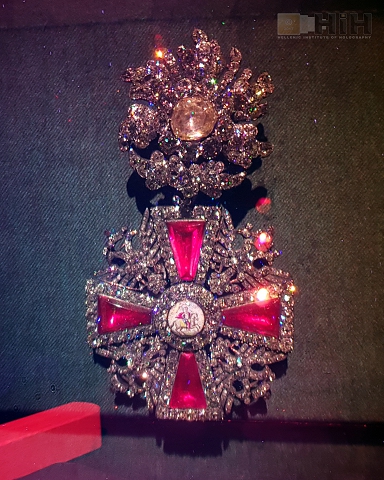 The ultra-realistic OptoClones are recorded on special panchromatic photo-sensitive high-resolution glass plates of fine grain, in a way resembling the early days of conventional photography. During holographic recording, HiH transports and installs its proprietary equipment at the Museum premises, where the selected artefacts are positioned on a special anti-vibration basis by the responsible conservators. The objects are exposed for few seconds in laser light of very low intensity passing through the holographic plate, on which the reflected light wavefront is recorded. The exposed plate is then developed, processed and dried.
The ultra-realistic OptoClones are recorded on special panchromatic photo-sensitive high-resolution glass plates of fine grain, in a way resembling the early days of conventional photography. During holographic recording, HiH transports and installs its proprietary equipment at the Museum premises, where the selected artefacts are positioned on a special anti-vibration basis by the responsible conservators. The objects are exposed for few seconds in laser light of very low intensity passing through the holographic plate, on which the reflected light wavefront is recorded. The exposed plate is then developed, processed and dried.
The unique analogue hologram derived in this manner, when properly lit, represents the original object in 1:1 scale and in every detail, at such a degree of fidelity that cannot be differentiated by the human brain. As a result, the HiH OptoClones can attract the attention not only of conventional technologically advanced viewers but also of visitors with a broader contemporary perspective in their cultural interests.
OptoClone of St. Alex. Nevsky's Order (1770, Gokhran)
Naturally, photographs of these holograms (such as those shown on this page) cannot communicate either the real chromatic impression nor the analytical detail that only 'live' viewing can offer. OptoClones of this type are useful not only for the virtual exhibition of works of art but -more importantly- for the recording and documentation of their state before/after restoration, before/after temporary loans, for their safe comparative analysis and study, for educational purposes and many other practical Museum applications.
| < Prev | Next > |
|---|



